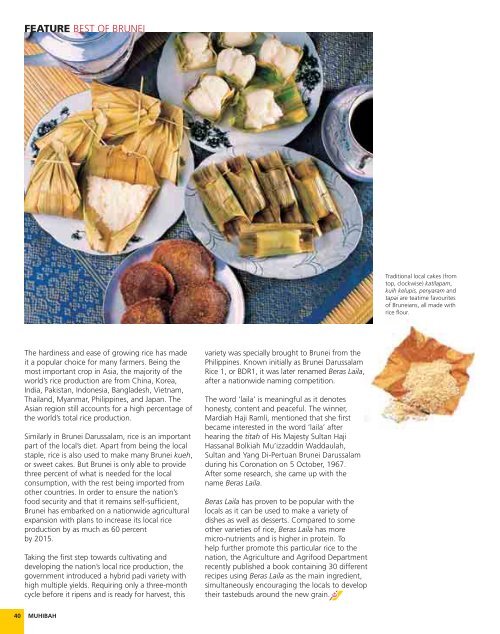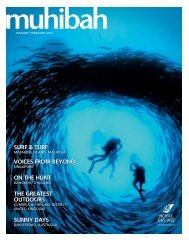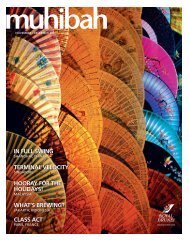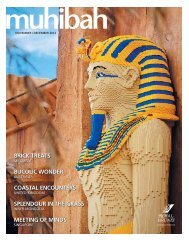SHORT AND SWEET FINDING AUTHENTICITY NORTHERN GEMS ...
SHORT AND SWEET FINDING AUTHENTICITY NORTHERN GEMS ...
SHORT AND SWEET FINDING AUTHENTICITY NORTHERN GEMS ...
Create successful ePaper yourself
Turn your PDF publications into a flip-book with our unique Google optimized e-Paper software.
40<br />
FEATURE BEST OF BRUNEI<br />
The hardiness and ease of growing rice has made<br />
it a popular choice for many farmers. Being the<br />
most important crop in Asia, the majority of the<br />
world’s rice production are from China, Korea,<br />
India, Pakistan, Indonesia, Bangladesh, Vietnam,<br />
Thailand, Myanmar, Philippines, and Japan. The<br />
Asian region still accounts for a high percentage of<br />
the world’s total rice production.<br />
Similarly in Brunei Darussalam, rice is an important<br />
part of the local’s diet. Apart from being the local<br />
staple, rice is also used to make many Brunei kueh,<br />
or sweet cakes. But Brunei is only able to provide<br />
three percent of what is needed for the local<br />
consumption, with the rest being imported from<br />
other countries. In order to ensure the nation’s<br />
food security and that it remains self-suffi cient,<br />
Brunei has embarked on a nationwide agricultural<br />
expansion with plans to increase its local rice<br />
production by as much as 60 percent<br />
by 2015.<br />
Taking the fi rst step towards cultivating and<br />
developing the nation’s local rice production, the<br />
government introduced a hybrid padi variety with<br />
high multiple yields. Requiring only a three-month<br />
cycle before it ripens and is ready for harvest, this<br />
MUHIBAH<br />
variety was specially brought to Brunei from the<br />
Philippines. Known initially as Brunei Darussalam<br />
Rice 1, or BDR1, it was later renamed Beras Laila,<br />
after a nationwide naming competition.<br />
The word ‘laila’ is meaningful as it denotes<br />
honesty, content and peaceful. The winner,<br />
Mardiah Haji Ramli, mentioned that she fi rst<br />
became interested in the word ‘laila’ after<br />
hearing the titah of His Majesty Sultan Haji<br />
Hassanal Bolkiah Mu’izzaddin Waddaulah,<br />
Sultan and Yang Di-Pertuan Brunei Darussalam<br />
during his Coronation on 5 October, 1967.<br />
After some research, she came up with the<br />
name Beras Laila.<br />
Beras Laila has proven to be popular with the<br />
locals as it can be used to make a variety of<br />
dishes as well as desserts. Compared to some<br />
other varieties of rice, Beras Laila has more<br />
micro-nutrients and is higher in protein. To<br />
help further promote this particular rice to the<br />
nation, the Agriculture and Agrifood Department<br />
recently published a book containing 30 different<br />
recipes using Beras Laila as the main ingredient,<br />
simultaneously encouraging the locals to develop<br />
their tastebuds around the new grain.<br />
Traditional local cakes (from<br />
top, clockwise) katilapam,<br />
kuih kelupis, penyaram and<br />
tapai are teatime favourites<br />
of Bruneians, all made with<br />
rice fl our.






